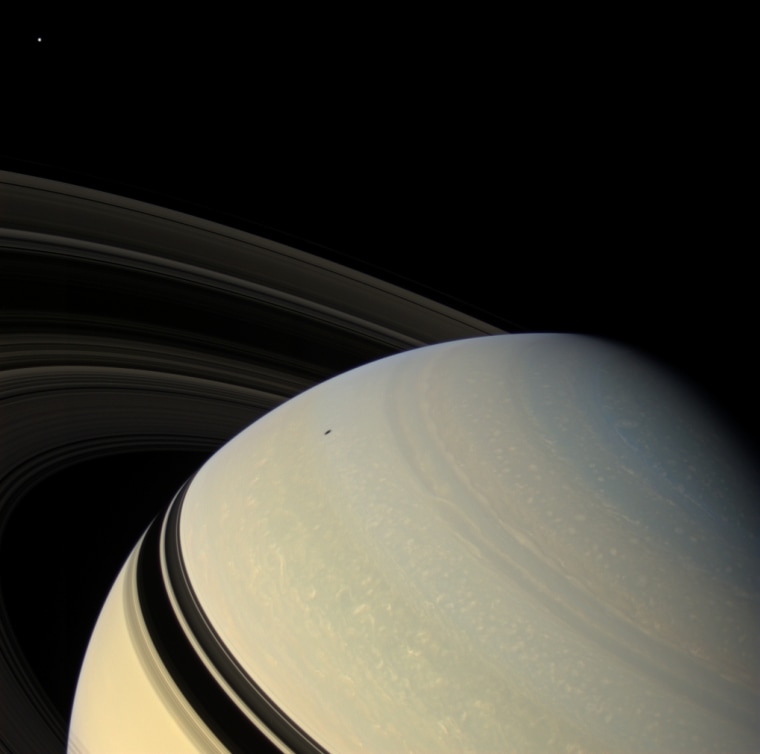The multibillion-dollar Cassini orbiter has officially ended its four-year primary mission to Saturn — ushering in a two-year extended mission that will focus on the ringed planet's mysterious moons.
The primary mission began when the spacecraft entered Saturnian orbit on July 1, 2004 (or June 30 in some time zones). Cassini produced the first pictures that pierced the haze surrounding Titan, Saturn's biggest moon. The orbiter also sent down a European-built piggyback lander called Huygens, which beamed back pictures from Titan's surface. The Cassini-Huygens observations revealed that Titan was laced with hydrocarbon seas and channels.
Cassini also discovered geysers of ice spewing from Enceladus, another Saturnian moon that may harbor subsurface oceans and perhaps even life.
Titan and Enceladus are the primary targets for Cassini's extended mission, which NASA approved in April. Cassini will also monitor seasonal effects on Titan and Saturn, explore Saturn's magnetic field and witness Saturn's equinox on Aug. 11, 2009, when sunlight will pass directly through the plane of the planet's rings.
The spacecraft's new agenda has been dubbed the Cassini Equinox Mission in honor of the astronomical event, which occurs roughly every 15 years.
Cassini's $3.3 billion primary mission was funded by NASA, the European Space Agency and the Italian Space Agency. NASA is picking up the bill for the $160 million extension. Officials have said the mission could be extended yet again if Cassini was still in good working order in mid-2010.
"We've had a wonderful mission and a very eventful one in terms of the scientific discoveries we've made, and yet an uneventful one when it comes to the spacecraft behaving so well," Bob Mitchell, Cassini program manager at NASA's Jet Propulsion Laboratory, said in a statement. "We are incredibly proud to have completed all of the objectives we set out to accomplish when we launched. We answered old questions and raised quite a few new ones, and so our journey continues."
JPL said that Bob Pappalardo, a geologist at the lab in Pasadena, Calif., would step into the role of Cassini project scientist for the extended mission. He replaces Dennis Matson, who will be turning his focus to future flagship space missions, according to NASA.
Carolyn Porco of the Colorado Space Science Institute, leader of Cassini's imaging team, said that the orbiter was "a robust and capable craft and will continue its work with ease."
"To explore a planetary system very much unlike our own is an occasion like no other," she said in a statement. "It has been hard going and exhausting for sure, but in return we have been rewarded beyond all imagining. Without equivocation, we on Cassini can proudly proclaim: Mission accomplished!"
